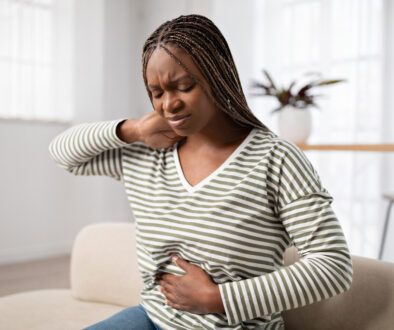The 4 Most Innovative Treatments for Fibroids
Almost half of women over 35 years of age will experience uterine fibroid tumors, which may cause many problems ranging from pelvic pain to complications during pregnancy. These benign growths are responsible for one-third of the hysterectomies performed in the U.S. (The Cleveland Clinic). If left untreated, some fibroids can grow to be the size of a cantaloupe.
Fibroids are very common, and newer techniques mean it’s not always necessary to have a hysterectomy to resolve the problem, said Dr. Joshua Hardison, FACOG.
How do I know if I have fibroids?
Symptoms include:
- Intense menstrual cramps
- Vaginal bleeding that is not related to your period
- Heavy menstrual periods and anemia caused by blood loss
- Pain during sex
- Abdominal pain
- Infertility and miscarriages
- Pressure that causes difficulty urinating, constipation and pain in the rectum
Fibroids are diagnosed by clinical examination and ultrasound. Additional evaluation may include a hysteroscopy, a procedure that uses a small camera to closely examine the lining of the uterus and take tissue samples if needed.
4 Innovative Treatments for Fibroids
1. Removal using a MyoSure device.
If we discover a fibroid during a hysteroscopy, we can remove it using a MyoSure device. We gently insert the MyoSure instrument into the uterus through your vagina, where we cut away the fibroid. Depending upon the size of the tumor, it can be removed within 10 minutes.
2. MRI-guided ultrasound surgery
In this procedure, specialized (interventional) radiologists target the fibroids using MRI-guided imagery and then deliver ultrasound waves to the area, which destroy the tumors. The waves are sent through the skin and there is no need for an incision.
3. Uterine artery embolization
Specialized (interventional) radiologists inject tiny, grain-like particles into uterine blood vessels where they attach to the fibroids and cut off the blood supply. As a result, the fibroids shrink. This procedure can be performed on an outpatient basis (American College of Obstetricians and Gynecologists).
4. Endometrial ablation.
During this procedure, we remove the lining of your uterus. This can be done using cryoablation, heated saline fluid, a heated balloon-like device, or microwaves/radiofrequency (The Mayo Clinic). While it does not remove fibroids, it can be effective in treating issues with abnormal bleeding that fibroids may cause.
It cannot be performed if you are pregnant. If you have an IUD, it must be removed before the procedure. This procedure should not be performed on those who may desire biological children in the future.
We will work with you to determine which procedure is the best option for you.
There are several factors we take into account when we consider how to treat your fibroid tumors. We examine the size, number, and location of the tumors, your symptoms, whether or not you want to have children and other factors. This is the only way to create a truly tailored plan to meet your needs.
If you’re having trouble with fibroids, remember that a hysterectomy is not your only option. Schedule an OB/GYN appointment in Durham or Chapel Hill so we can discuss your options.
For more than 40 years, Chapel Hill OBGYN has served women in the Triangle area, sharing the joy of little miracles and supporting them during challenges. Our board-certified physicians and certified nurse midwives bring together the personal experience and convenience of a private practice with the state-of-the-art resources found at larger organizations. To schedule an appointment, please contact us for more information.




